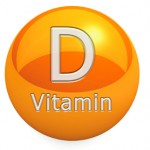“The important role of vitamin D in osteoporosis is indisputable,” says Petros Efthimiou, MD, FACR, associate chief of rheumatology, New York Methodist Hospital, and associate professor of clinical medicine and rheumatology, Weill Medical College of Cornell University, New York. “However, when it comes to autoimmune diseases, low vitamin D levels have been implicated in some, but not all diseases. Several recent studies have produced conflicting results.”
“With the discovery that vitamin D receptors are present on all nucleated cells, including cells of the immune system, there has been speculation that vitamin D could modulate immune function and potentially influence the risk of or the course of autoimmune disease,” Dr. Kolasinski says. Still, the evidence is not yet definitive, she says.
In the Clinic
So how does the research translate into clinical daily life? First, many rheumatologists actively check vitamin D levels in their patients at least once a year, if not more often.
“I frequently test for vitamin D levels in patients at risk of or who have osteopenia/osteoporosis, including peri- and postmenopausal women,” says Orrin Troum, MD, rheumatologist, Providence Saint John’s Health Center, Santa Monica, Calif. “Other ‘at-risk’ patients are those who don’t have adequate sun exposure or use sunscreen on all sun-exposed areas.”
“I test vitamin D levels at least annually and recommend supplementation to all those who are found to be deficient, as well as those on steroids [because] I know they will be at increased risk for osteoporosis,” Dr. Kolasinski says.
It’s especially common to find low vitamin D levels in the colder parts of the country, such as the Northeast, Dr. Kaplan says. However, those levels will likely rise in the summer.
Dr. Wei tests patients at three different sun-exposure times of the year—the fall, the early spring and in the dead of winter.
Then, rheumatologists must determine what they consider to be a low vitamin D level. Many believe a level of at least 30 or 32 nanograms is acceptable to sufficiently suppress the parathyroid hormone, Dr. Russell says.
A level of 30 or less is when Dr. Efthimiou will recommend supplementation.
The Vitamin D Council recommends a sufficient level as 40 to 80 nanograms—and it recommends most people should strive for a level of 50, which is what Dr. Wei aims for in patients as well. The Endocrine Society says 30 or more is sufficient. Although vitamin D toxicity is not seen often, it’s generally considered to occur at 150 nanograms or higher.

